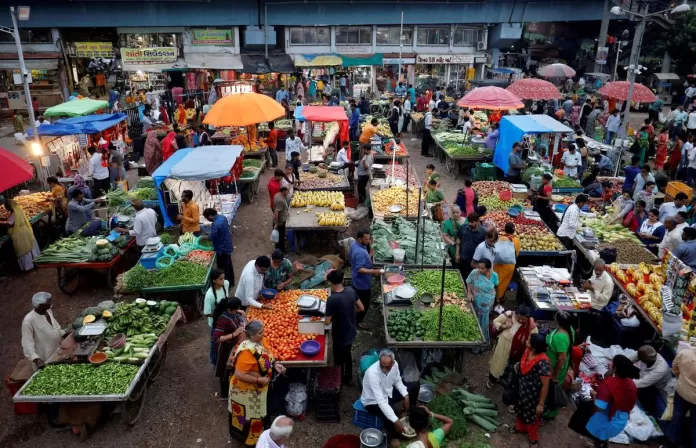In January 2025, the wholesale inflation rate decreased to 2.31%, compared to 2.37% in December. The reduction is attributed to the price drop of everyday essential goods and food items. These figures were released by the Ministry of Commerce and Industry on February 14.
Key Reasons for the Decline in Inflation:
The inflation in everyday goods dropped from 6.02% to 4.69%.
Food inflation decreased from 8.89% to 7.47%.
The inflation in fuel and power decreased from -3.79% to -2.78%.
Manufacturing products saw an increase in inflation, rising from 2.14% to 2.51%.
Other Major Changes:
Vegetable inflation dropped from 28.65% to 8.35%.
Pulses inflation slightly increased from 5.02% to 5.08%.
The inflation in grains went up from 6.82% to 7.33%.
Milk inflation rose from 2.26% to 2.69%.
Impact of Wholesale Inflation:
Long-term high wholesale inflation can adversely affect production sectors. When wholesale prices remain high, producers often pass the cost burden on to consumers. The government can control this through tax reductions, as seen with fuel taxes, but such cuts have limits.
Major Components of Wholesale Inflation:
Primary Articles: 22.62% weightage (includes food articles, non-food articles, minerals, crude petroleum)
Fuel and Power: 13.15% weightage
Manufactured Products: 64.23% weightage (related to factory-produced goods)
How Inflation is Measured:
In India, inflation is measured in two ways – Retail Inflation (CPI) and Wholesale Inflation (WPI). Retail inflation is based on prices paid by consumers, while wholesale inflation is based on prices between businesses.
In wholesale inflation, manufactured products contribute 63.75%, primary articles contribute 22.62%, and fuel and power contribute 13.15%. In retail inflation, food products and other goods contribute 45.86%.
Shashi Rai














